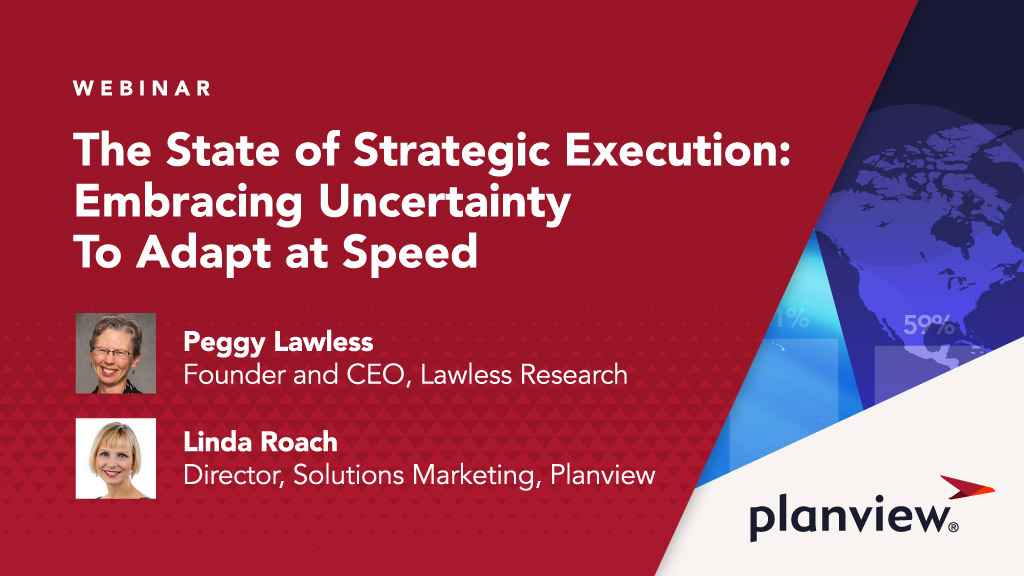
We thought we knew about uncertainty. Market disruptions by startups; sure. Shifting consumer behaviors? Part of the job. But then the pandemic happened, creating a domino effect of disruptions that we are learning to accept as part of daily life. The only thing certain about our futures, it seems, is that we have an extremely limited ability to predict what they will hold.
But humans are a resilient bunch: We have found ways to adapt to this new normal. We’ve learned to write our plans in pencil, and to keep our erasers nearby. We have all been taking a crash course in dynamic planning – being ready for, hypothetically, anything: Finding ways to minimize losses and maximize opportunities while moving forward into the unknown.
In business, dynamic planning is more complicated – but no less essential, especially in times of sustained economic uncertainty. Dynamic planning has moved from a “nice to have” that might be conducted as part of an annual planning cycle, to an absolute essential part of daily operations.
Read Next: Meeting Strategic Initiatives with Dynamic Planning
“Failing to plan is planning to fail.” – Benjamin Franklin
Right now, every CFO on earth is trying to find answers to questions like:
- What if revenue is down 20% next quarter?
- What if renewals are 10% lower next quarter?
- What if customers are unable to pay us on time, or at all?
- Do we have money to pay our debt obligations, employees, or vendors, in the face of those scenarios?
Meanwhile, managers are bracing themselves for the inevitability of budget cuts: If we had to keep going with 10% less budget, or 20% less, what would that look like? What would we cut? What impact would that have?
The answers to these questions, and others like them, are rarely conclusive, because they are based in a hypothetical reality. But failing to plan for that reality could come at the risk of jeopardizing the activities, people, and processes that are holding your business together.
The problem with “peanut buttering” cost reductions
Allow me to share a likely relatable example: At the beginning of the pandemic, in the face of much uncertainty, many companies chose to pull the “easiest” lever to quickly save money – letting go of all contractors, effective immediately. Sound familiar?
What many companies learned is that “cutting all contractors” is not the same as cutting “unnecessary” expenses.
This approach does not consider that some of the business’ most vital work might be performed by contractors, or that there might be ongoing, business-critical initiatives that rely on the work of contractors to see them through.
This example underscores the fundamental flaws with the “peanut butter” approach to cost reductions: Spreading budget cuts equally across projects or business functions.
This approach fails to connect initiatives to future business outcomes, making it impossible to see how adding or removing funding from different ones might affect the business down the road. When faced with the question of what impact a given resource reduction will have on the future, it’s anybody’s best guess.
A more informed approach
But there is another way: By tying resources to initiatives and initiatives to business outcomes, and using software designed to enable dynamic planning, managers can make intelligent decisions about how to reduce costs with the least adverse impact to business outcomes.
Armed with the knowledge of how funding relates to specific initiatives and how those initiatives are tied to specific business outcomes, managers have the ability to plan for different scenarios in real time, with real data to inform decisions.
Read Next: The Volvo Group Drives Transformation in Enterprise Portfolios to Support the Global Business
But how? First, rather than seeing dynamic planning as a separate exercise, perhaps conducted annually, Lean-Agile businesses conduct dynamic planning on a continuous basis – both more frequently scheduled and ready on-demand. Second, by conducting scenario planning in the same tools your teams use every day (and I’m not talking about PowerPoint, Excel, or Gmail).
Effective scenario planning isn’t just adjusting key assumptions based on external factors, but also learning from your company’s own delivery, velocity, and flow metrics.
All managers are familiar intuitively with the Plan-Do-Learn-Act framework. But Agile businesses apply this more frequently (dynamically) and learn from their own delivery performance to inform their next actions.
Plan for tomorrow, today.
Building dynamic planning, including scenario planning, into your recurring operations can help you prepare for the inevitability of unplanned resource reductions, budget cuts, market shifts, and other disruptions. Although we will never truly know what awaits us around the corner, we can use the information we have to make informed decisions and adjust our actions at every step to drive the best outcomes possible.
Need to get started with dynamic planning? Read this eBook to discover the five steps you need to take to rapidly replan, reprioritize, and effectively execute on your company strategy.




